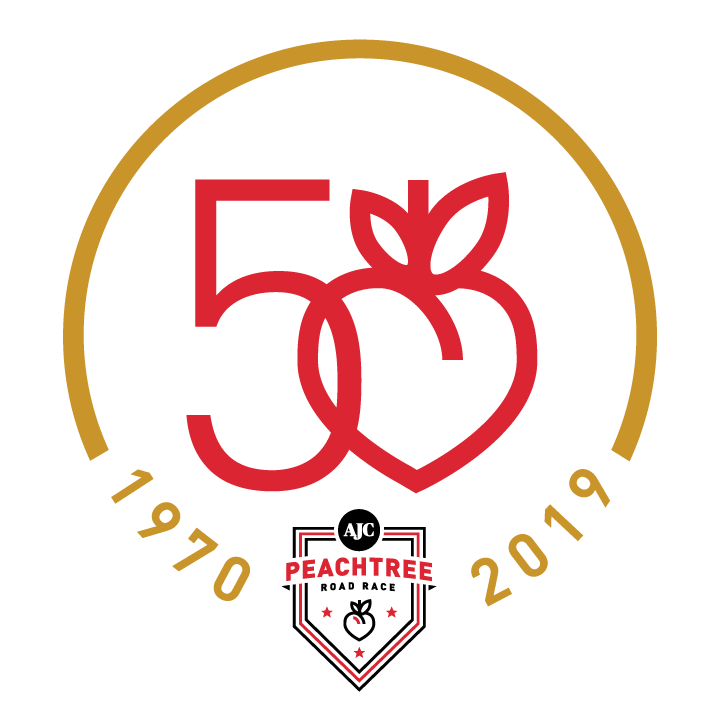From a Car Trunk to One Click

With registration opening for the 50th Running of the AJC Peachtree Road Race opening tomorrow, take a look at the history of the registration process for the race. Then, visit ajc.com/peachtree tomorrow to register for this year’s historic edition.
For five years, going back to 1991, James Bonds had tried and failed to get into the AJC Peachtree Road Race. First, a mad Saturday dash to buy the earliest Sunday edition of the Atlanta Journal-Constitution on the day it printed the entry form.
Then there was another scramble, to get it in the mail as soon as physically possible. Because the quicker you could get your application in the mail, the higher your chances were of getting into the race.
“We live outside Griffin, and it always seems like our mail is two or three days behind,” Bonds told the Atlanta Journal-Constitution back in 1996.
So in 1996, according to that AJC story, Bonds was feeling desperate enough to write “please let me run” on the application.
That didn’t work, either.
Back in those days, the first 40,000 paper applications received by mail were automatically entered into the race; the final 10,000 were selected by a lottery. So far, Bonds was still on the sidelines. Then Julia Emmons, race director at the time, handpicked the final lucky few in a last-ditch drawing.
Bonds’ application was one of the final three Emmons plucked from the pile. Finally, he was in.
***
As the AJC Peachtree Road Race celebrates its 50th Running, paper applications and the race-within-a-race to get to the post office are long gone, replaced in 2009 by the ability to register from your sofa with the click of a mouse. There is still no guarantee of getting into the race – which selects entrants via a lottery – but at least the days of foraging for stamps and fighting traffic are over.
For Atlanta Track Club officials, however, registration is still a busy time. This year, when demand is likely to be heavy for the milestone running of the largest road race in the country and largest 10K in the world, things will likely be even more hectic.
“When Peachtree registration opens we’re here at 3:00 a.m., when it closes we stay up until 1:00 a.m. to make sure everyone who needs a response gets one,” said Paula Beebe, the Club’s timing and registration manager.
The evolution of the registration process continues in 2019 with new dates for Club members to submit their applications. (See accompanying box.)
In the early years of the event, participants could register on race day: In 1970, registration (at $2) for 150 runners was conducted out of the trunk of race founder Tim Singleton’s car. By the mid 1970s, runners who wrote in for an entry blank, then filled it out and mailed it back to the Club saved $1 off what they would have paid to sign up on race day – $3 in 1974.
By 1979, as the race grew to 15,000, race day registration was eliminated.
A decade later, the field had grown to 25,000 but the desire to participate had grown even more.
In 1989, the race closed out in a mere nine days, and Julia Emmons – race director and executive director of Atlanta Track Club at the time – grew concerned. In 1990, the field was expanded from 25,000 to 40,000.
"What we did not want was to close … in nine days because then everybody would be mad at us again," Emmons told the AJC.
But as the race grew, so did the clamor to run it. In 1990, that first year of the expansion, the field filled up in 20 days – plenty of breathing room after the nine days in 1989. In 1991, it took 17 days. In 1993, the field was enlarged again, to 45,000; it took six days to reach capacity.
“It just became a tradition for people to wait for that Saturday edition of the paper,” said Lisa Tanner, Atlanta Track Club director of events. “People would have Peachtree parties and all go and get applications together. Registering was as much of an event as the actual race.” The AJC, which usually printed 95,000 early editions of the Sunday paper, increased its press run on the day it printed the application.
In 1994, the race expanded again – to 50,000 runners, in honor of the 25th Running – but a partial lottery was announced to ease the dash to the post office. It took only two days to fill the 40,000 guaranteed spots, and a lottery was held from applications that were received in the next 10 days to fill the final 10,000 spots.
About two months after that race, Emmons announced plans for the 1995 race that would prevent a repeat of 1994, when “thousands of people” were accepted under multiple names. Now, only one entry per person and only one entry per envelope would be allowed, and applicants were required to send a copy of their identification.
Stunningly, about 62,000 applications were received in the first 48 hours. Even pouncing on the early edition of the AJC and driving the application straight to the post office was no longer a sure thing.
“Sure, you want to get it in as early as possible, but just because you mail it in Saturday doesn't guarantee you're in. As we all know, there are differences in post offices," Emmons told the AJC. "That's one of the reasons we have a lottery drawing. That gives another 10,000 people a chance, maybe a 1-in-2 chance."
In addition to the AJC, applications over years could be found at Atlanta-area sporting goods stores, athletic shoe stores, Texaco gas stations and the Atlanta Track Club office. In the mid-2000s, Waffle House got in on the act, with hawkers selling the AJC in their parking lots.
Applications were sent to a P.O. Box, a Wachovia Bank lockbox services facility on Virginia Avenue. As a part of their event sponsorship, the Wachovia employees would process the checks, and then all entry forms were boxed and later sent to the Club for verification. Entrants would learn of their acceptance when their checks cleared from their accounts.
It would take about a month for Club volunteers to do the data entry, said then-office manager Andy Carr, who added, “We wouldn’t have any other events in April because we were too busy typing Peachtree applications.”
Every day staffers would leave the office and a crew of volunteers would come in to enter data on computers, working until 10 p.m.
“After I was involved in the process for the first time in 2000, I told Julia it was too taxing; we had to change something,” said Carr. “Although it was really difficult to give that task to someone else – filing thousands of people’s information – we moved to having our mailing house do all the data entry for us.”
ACE Marketing (later called World Marketing & Management) was in charge of sending race packets with participant bibs to all those accepted into the race, and in 2001 they took over all data entry of the then-55,000 applications as well.
But that wasn’t the only change that year. For the first time, the Peachtree application could be downloaded online. It still had to be printed and mailed in, but gone was the need to sprint to a local gas station to get that early edition of the paper.
“It was a big deal,” Carr remembers. “Local people could get their newspaper, but if you lived out of state [before this] you had to send in a request for an application. Moving to a printable online version meant everyone could get it easier.”
The transition was met with some opposition from the AJC: Tanner recalls being told they sold more papers on “application day” than on any other day of the year.
“The wave of technology called for the need to change,” said Tanner. “It was just so much information to process year after year.” So in 2009, the process was shifted online via the AJC website – a change that did not come easy. With tens of thousands of applicants all trying to enter their information during a short time frame to guarantee one of the first 45,000 slots, the procedure went through some growing pains. (Entry forms were still published in the AJC for those without access to a computer, and the final 10,000 runners were selected via lottery from those print entries).
That first year, the system crashed. “We received 1,000 emails [with questions and complaints] in less than two hours and then stayed until midnight to return every single one of them.”
What was known as a “safety valve” had been inserted into the code of the system in order to manage the massive amount of data that would be coming in. It turned out this valve was the exact thing that caused the system to crash. Once it was removed the system operated fine. (Tanner can laugh about it now.)
In 2011, the year the field was expanded to a cap of 60,000, the current all-lottery format was launched to end the first-come, first-served frenzy.
The challenge of handling the volume of inquiries during registration hasn’t changed throughout the decades. “My goal was always to try and not have the phone ring,” laughed Carr. “That was impossible, but the years it didn’t ring as much we knew we were doing something right.”







